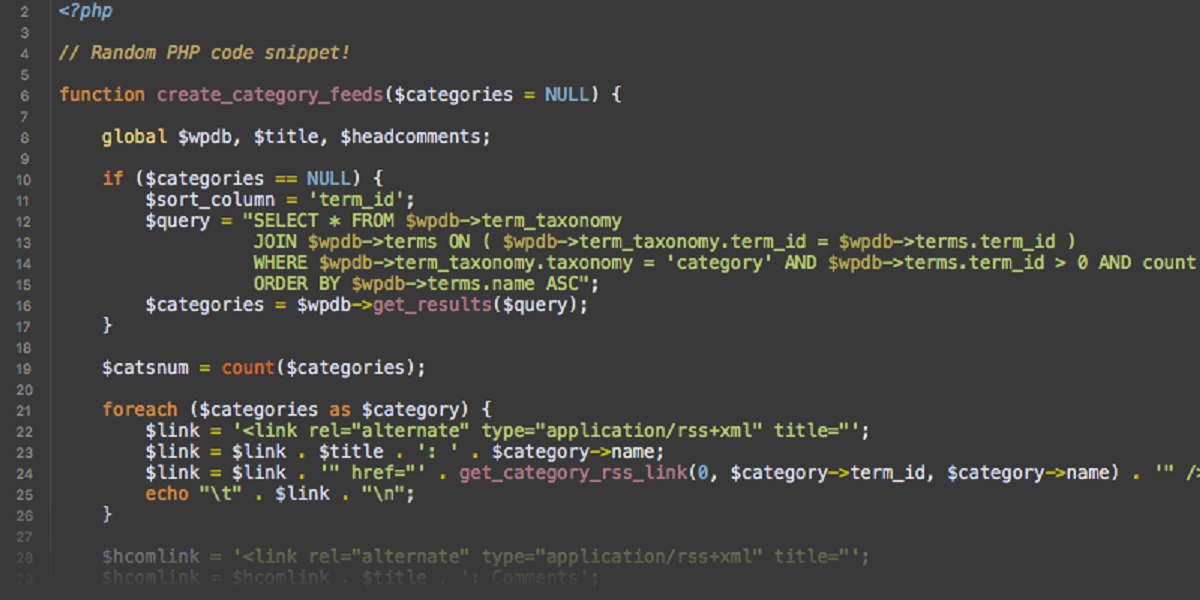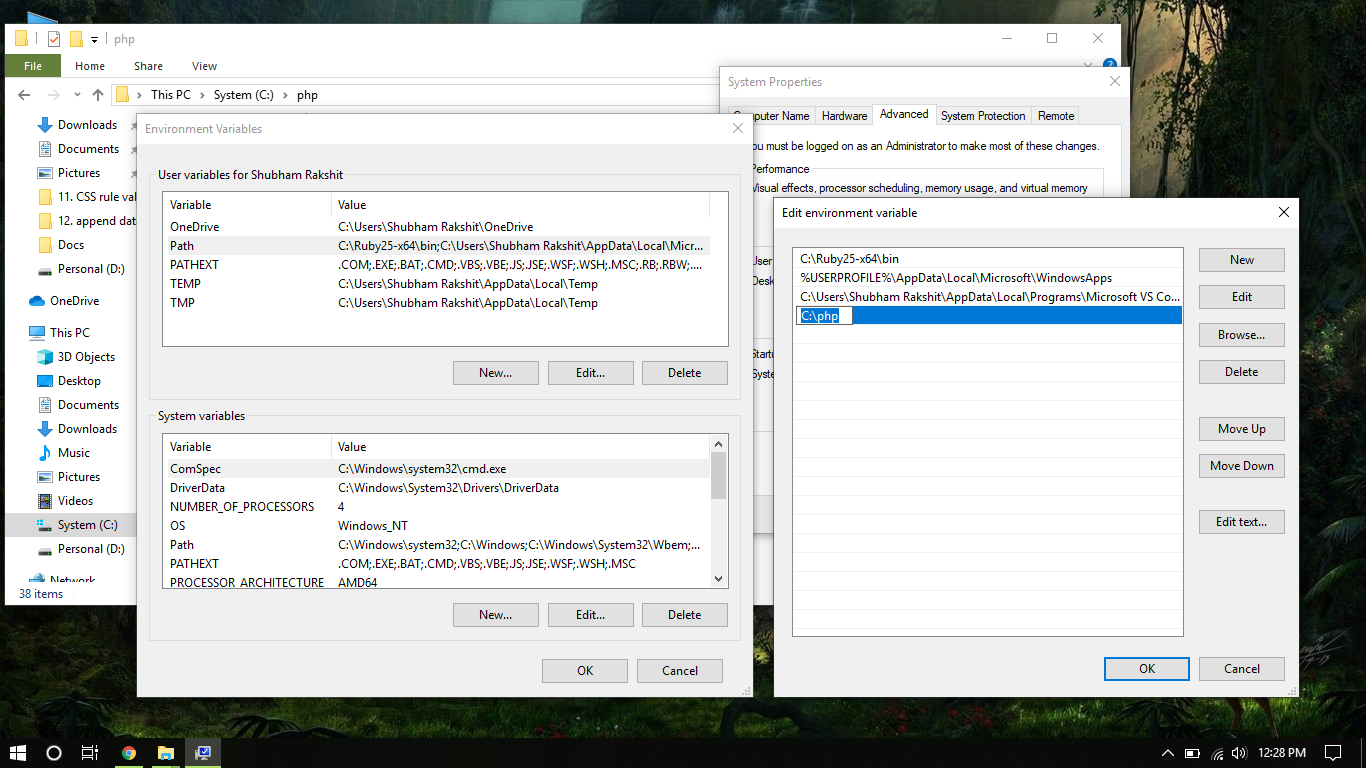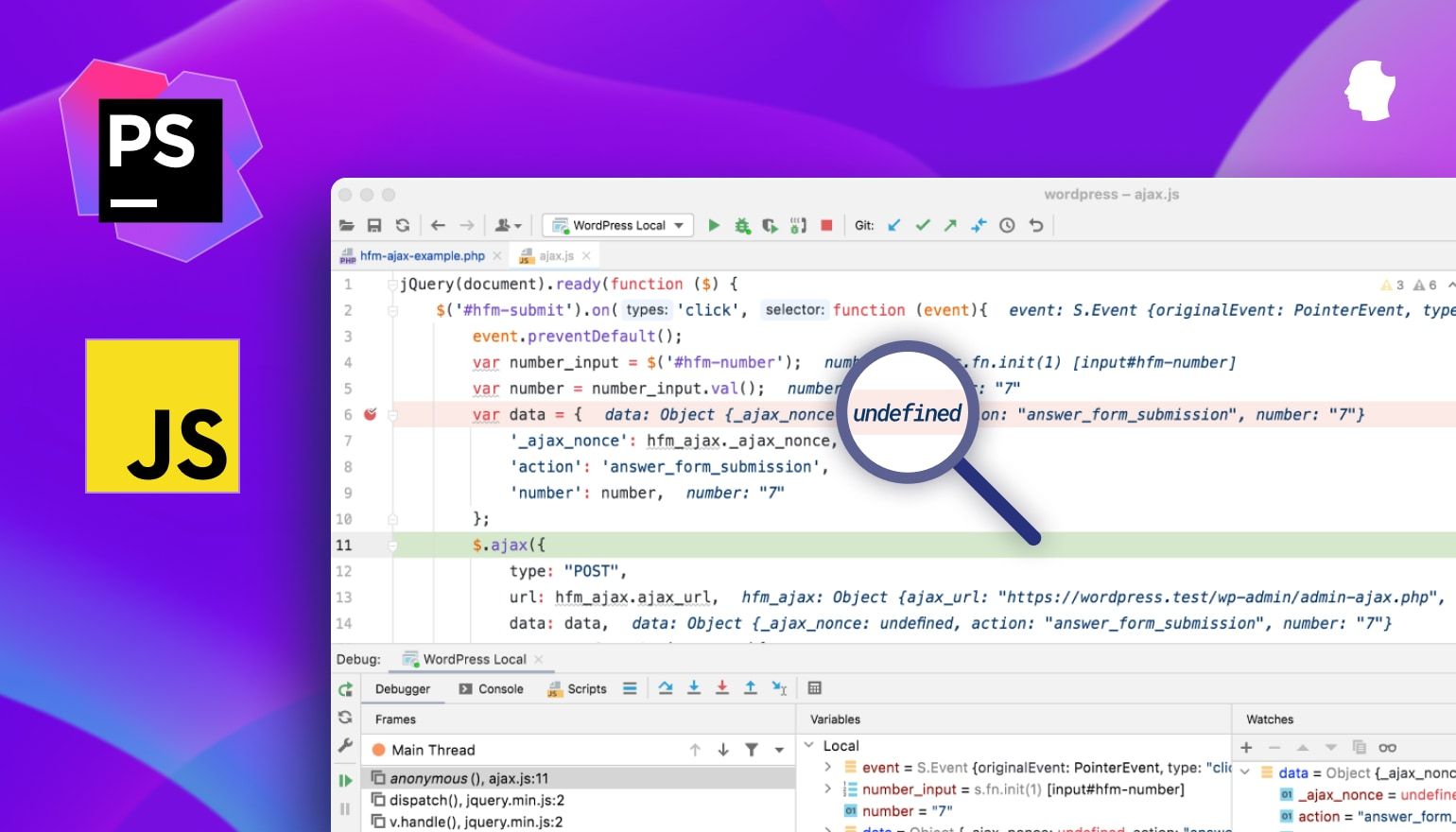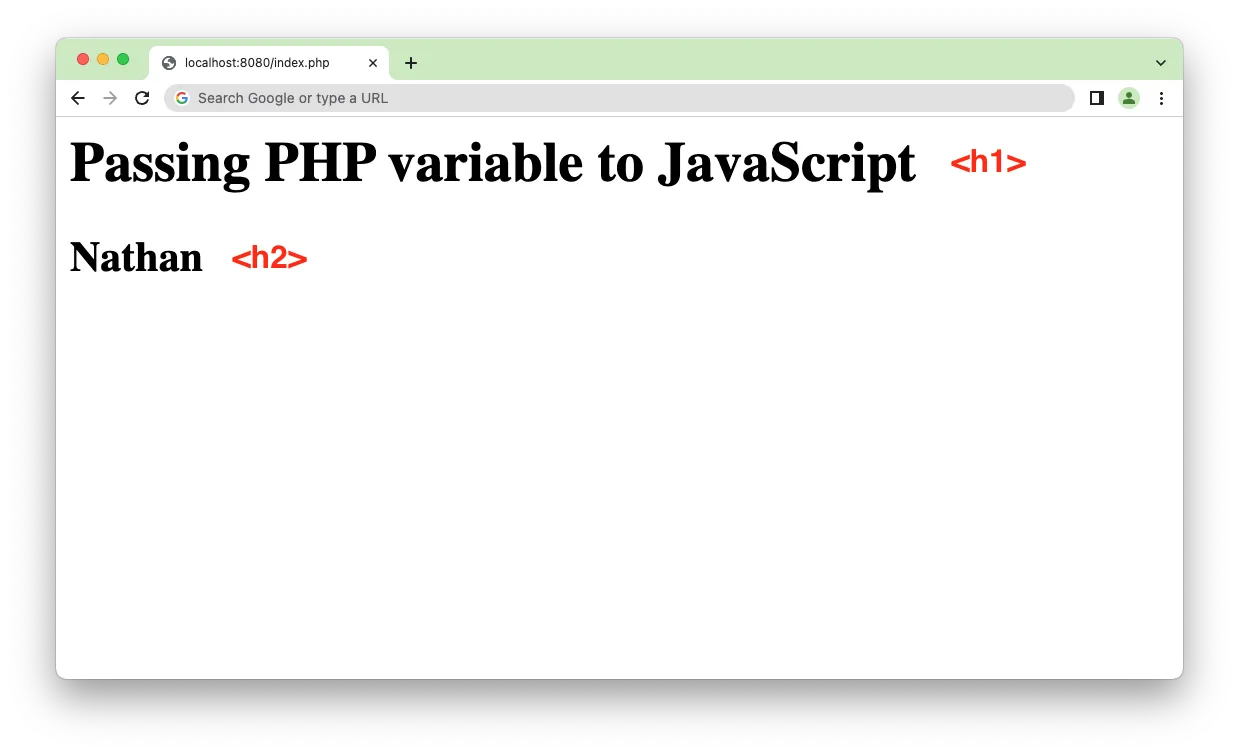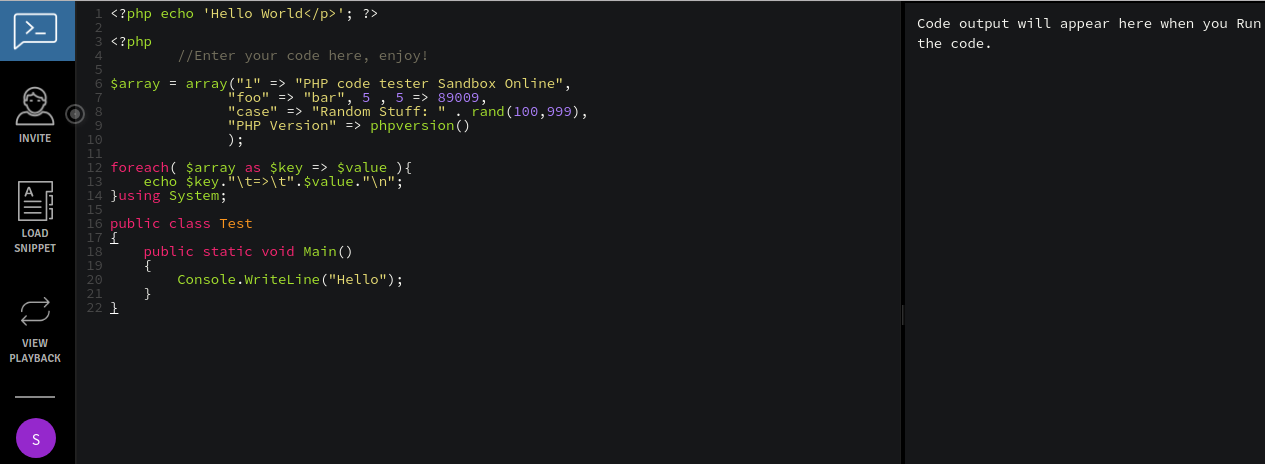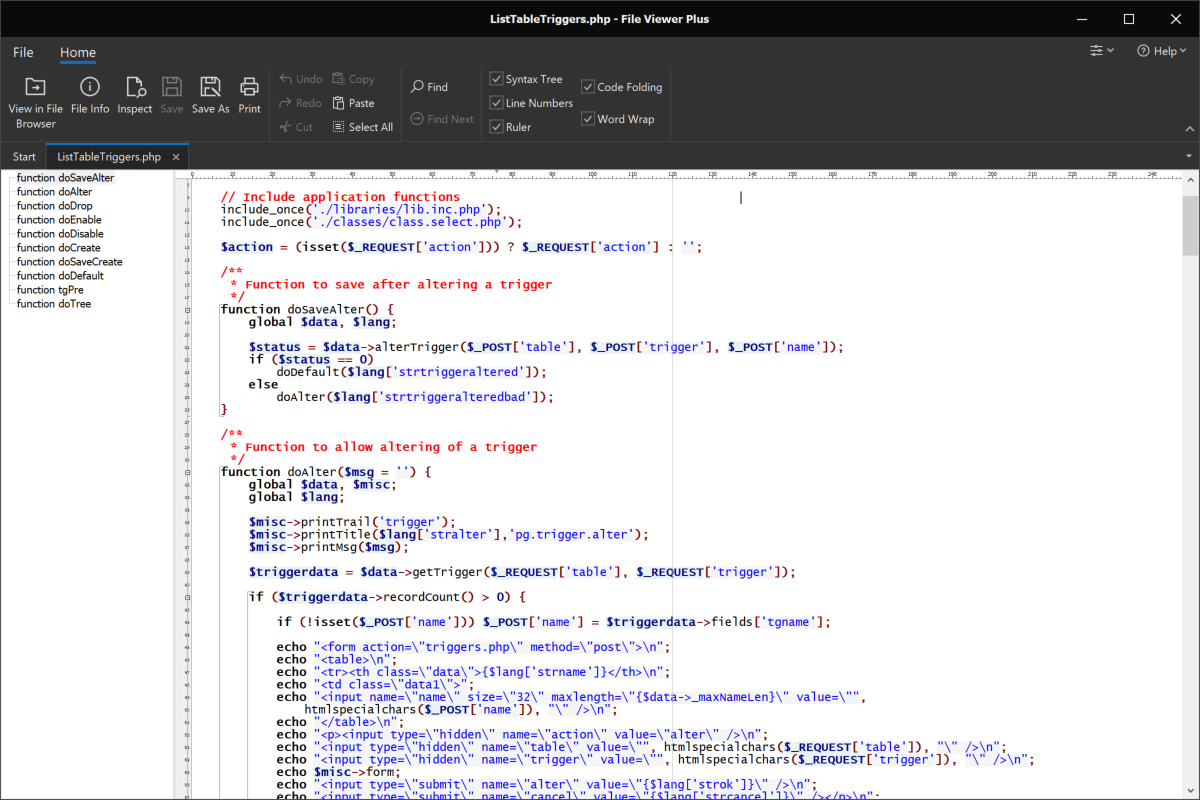Introduction
Welcome to the exciting world of PHP code! Whether you’re a seasoned developer or just starting out, understanding what PHP code is and how it works is crucial to building dynamic and interactive websites. In this article, we will explore the fundamentals of PHP code, its advantages and disadvantages, and common use cases.
PHP, which stands for Hypertext Preprocessor, is a server-side scripting language widely used for web development. It provides a flexible and powerful framework for building dynamic websites and web applications. PHP code allows developers to embed executable code within HTML pages, enabling them to create dynamic content that can be personalized for each visitor.
Code, in the context of programming, refers to a set of instructions written in a specific programming language. It serves as a blueprint for computers to execute tasks and perform desired actions. Code is written using a syntax that follows the rules and structure of the programming language being used.
Combining the concepts of PHP and code, PHP code refers to the set of instructions written in the PHP programming language. These instructions are processed and executed by the server before the resulting HTML page is sent to the client’s web browser.
Now that we have a basic understanding of PHP and code, let’s dive into the advantages and disadvantages of PHP code, to help you determine when and where it is most appropriate to use.
What is PHP?
PHP is a server-side scripting language designed for web development. It was created by Rasmus Lerdorf in 1994 and has since become one of the most widely used programming languages for building dynamic and interactive websites. PHP, which stands for Hypertext Preprocessor, is an open-source language that can be embedded within HTML code or run as standalone scripts on a server.
One of the key features of PHP is its ability to generate dynamic web content. Unlike static HTML pages, which are the same for all users, PHP allows developers to create web pages that can be customized based on user input, database queries, or other factors. This makes PHP ideal for creating applications such as blogs, e-commerce websites, content management systems, and more.
PHP is known for its versatility and ease of use. It has a simple and intuitive syntax that is easy to learn for beginners, yet offers advanced features for experienced developers. With its extensive library of built-in functions and frameworks, PHP enables developers to build complex web applications in a relatively short amount of time.
Furthermore, PHP has excellent integration capabilities with various databases, such as MySQL, Oracle, and PostgreSQL, making it easy to retrieve and store data. It also supports a wide range of protocols, including HTTP, FTP, and IMAP, allowing developers to interact with other servers and services.
Another advantage of PHP is its compatibility with different operating systems, including Windows, Linux, macOS, and more. This makes PHP a platform-independent language, allowing developers to deploy their applications on a variety of servers and environments.
In summary, PHP is a powerful and widely adopted server-side scripting language for web development. Its ability to generate dynamic content, ease of use, extensive library, and cross-platform compatibility make it an excellent choice for building flexible and interactive websites.
What is Code?
Code, in the context of programming, refers to a set of instructions written in a specific programming language. It is the foundation of any software or application and serves as a roadmap for computers to perform specific tasks. Code is essentially a series of commands that tell the computer what to do and how to do it.
Programming languages, such as C++, Python, Java, and PHP, provide a structured and standardized way to write code. Each programming language has its own syntax and rules that govern how the code should be written and interpreted by the computer.
Code can be classified into different categories based on its purpose and functionality:
- Sequential Code: This type of code is executed line by line in a sequential manner. It follows a top-down approach, where each instruction is executed in the order it appears in the code.
- Conditional Code: Conditional code allows for decision-making within a program. It includes statements such as if-else, switch-case, and loops, which enable the program to perform different actions based on specific conditions.
- Repetitive Code: Repetitive code, also known as loops, allows for the execution of a block of code multiple times. It is useful in situations where a certain set of instructions needs to be repeated a specific number of times or as long as a certain condition is met.
- Modular Code: Modular code promotes code reusability and maintainability by breaking down a program into smaller, reusable modules or functions. These functions can be called multiple times within the code, reducing code duplication and improving overall code structure.
Code is written by programmers using the syntax and rules of a particular programming language. It is then processed and executed by a computer or interpreter, which converts the code into machine-readable instructions. These instructions are executed by the computer’s processor, resulting in the desired output or behavior.
Overall, code serves as the backbone of software development and enables computers to perform complex tasks. It is the language that computers understand, and proficiency in writing efficient and structured code is a fundamental skill for programmers in today’s technology-driven world.
What is PHP Code?
PHP code refers to the set of instructions written in the PHP programming language. It combines the power and flexibility of PHP with the structure and syntax of code, enabling developers to create dynamic and interactive web content.
Unlike static HTML pages that remain the same for all users, PHP code allows developers to embed executable code within HTML documents. This means that PHP code can be used to generate dynamic content on the server-side before the resulting HTML page is sent to the client’s web browser.
PHP code is written in plain text files with a .php extension. It can be written using a simple text editor, integrated development environments (IDEs), or specialized PHP editors, offering syntax highlighting and other helpful features for writing PHP code.
One of the key features of PHP code is its ability to be seamlessly integrated with HTML code. PHP code can be inserted into HTML pages using special PHP tags, such as or . These tags allow developers to switch between PHP code and HTML markup, making it easier to create dynamic web pages.
In addition to HTML integration, PHP code can also interact with databases, manipulate files, handle form data, perform mathematical calculations, and much more. It provides a wide range of built-in functions and extensions that make complex tasks easier to accomplish.
PHP code is commonly used for applications such as form processing, user authentication, content management systems, e-commerce websites, and dynamic web page generation. It is renowned for its ability to handle large amounts of data efficiently and its compatibility with various operating systems and web servers.
In summary, PHP code is a powerful tool for building dynamic and interactive websites. It combines the flexibility of PHP with the structure of code to create executable instructions that can generate dynamic content and perform various tasks. By seamlessly integrating with HTML and offering a wide range of functionality, PHP code enables developers to create robust and feature-rich web applications.
Advantages of PHP Code
PHP code offers several advantages that make it a popular choice among developers for web development projects. Let’s explore some of the key advantages of using PHP code:
- Easy to Learn and Use: PHP has a simple and intuitive syntax that is easy to learn for beginners. Its similarity to C and JavaScript allows developers to quickly grasp the fundamentals of the language and start building web applications.
- Open-Source and Free: PHP is an open-source language, which means it is freely available to use and distribute. This makes it a cost-effective choice for businesses and individuals, as they can leverage the power of PHP without any licensing fees.
- Large Community and Support: PHP has a large and active community of developers who contribute to its growth and provide support and resources. This means that developers can easily find help, tutorials, and libraries to aid in their PHP programming journey.
- Platform Independence: PHP code can be executed on various operating systems, including Windows, Linux, macOS, and more. This allows developers to deploy their applications on different servers and environments, providing flexibility and convenience.
- Integration Capabilities: PHP has excellent integration capabilities with other technologies, such as databases (e.g., MySQL, Oracle) and web services (e.g., RESTful APIs). This makes it easy to retrieve and store data, interact with external systems, and create seamless web experiences.
- Efficient Performance: PHP is known for its efficiency and speed, making it suitable for handling high volumes of web traffic. It has built-in caching mechanisms and optimized execution engines that enhance the performance of PHP applications.
- Flexible and Scalable: PHP code offers flexibility and scalability for web applications. It can be easily integrated with different frameworks, such as Laravel, Symfony, and CodeIgniter, which provide additional features and functionality to support the growth and complexity of web projects.
These advantages make PHP code a versatile and reliable choice for web development. It empowers developers to build robust and dynamic web applications efficiently, leveraging a vast array of resources and community support.
Disadvantages of PHP Code
While PHP code offers numerous advantages, like any programming language, it also has its share of disadvantages. It’s important to be aware of these potential drawbacks when considering PHP for web development projects. Let’s explore some of the key disadvantages of using PHP code:
- Inconsistent Naming Conventions: PHP lacks consistent naming conventions for functions and libraries, leading to challenges in code readability and maintainability. This can make it difficult for developers to understand and work with PHP code written by others.
- Weak Typing: PHP has weak typing, which means variables are not strictly defined with a specific data type. This can result in unexpected behavior and potential security vulnerabilities if not carefully managed.
- Limited Modularization: PHP code can become difficult to manage and maintain as projects grow larger, due to the limited built-in support for modularization and code organization. This can lead to code duplication and a lack of clear separation of concerns.
- Less Secure Defaults: PHP has historically faced criticism for having less secure default settings and configurations. It is crucial to implement proper security practices and regularly update PHP installations to address potential vulnerabilities.
- Performance Concerns: While PHP itself is known for its efficiency, certain coding practices or inefficient algorithms in PHP code can impact performance. Care should be taken to optimize PHP code to ensure optimal performance, especially for high-traffic websites.
- Community Fragmentation: The PHP community is vast, which can result in fragmentation, leading to multiple coding standards and an abundance of conflicting advice. This can make it challenging for new PHP developers to navigate and find the best practices.
- Less Suitable for Complex Desktop Applications: PHP is primarily designed for web development and may not be the best choice for complex desktop applications. Other languages like C++ or Java may be preferred in such cases.
Despite these disadvantages, PHP remains a widely-used and popular language for web development. With proper coding practices, adherence to security guidelines, and effective use of available resources, the disadvantages can be mitigated, allowing developers to utilize the power and flexibility of PHP code in their projects.
How PHP Code Works
PHP code works by being processed and executed on the server before the resulting HTML page is sent to the client’s web browser. Let’s explore the steps involved in how PHP code works:
- Client Sends Request: A client, such as a web browser, sends a request to the server for a specific web page. This request can be triggered by a user clicking a link, submitting a form, or any other interaction on a web page.
- Server Receives the Request: The web server receives the client’s request and identifies that the requested page contains PHP code.
- PHP Interpreter Processes the Code: The PHP interpreter on the server processes the PHP code within the web page. It starts by parsing the code, interpreting the instructions, and executing the necessary actions.
- Dynamic Content Generation: During the code execution, PHP can interact with databases, perform calculations, manipulate files, and more. This allows for the generation of dynamic content based on user input, database queries, or other factors.
- HTML Page Generation: After executing the PHP code and generating any dynamic content, the PHP interpreter combines the resulting HTML code with any static HTML content from the web page. The final HTML page is then sent back to the client’s web browser.
- Client Receives and Renders the Page: The client’s web browser receives the HTML page and renders it, displaying the content to the end-user. Any dynamic content generated by the PHP code will appear as part of the rendered page.
PHP code is executed on the server-side, which means that the client only sees the final HTML output. This provides several benefits, such as the ability to generate personalized and dynamic web content, offload processing from the client-side, and maintain the security of sensitive data.
It’s important to note that PHP code is typically embedded within HTML pages using special PHP tags, such as or , allowing developers to switch between PHP code and HTML markup seamlessly.
Overall, PHP code works by processing and executing on the server-side, generating HTML output, and delivering dynamic content to the client’s web browser. This allows for the creation of interactive and personalized web experiences.
Common Uses of PHP Code
PHP code is widely used in various web development projects and offers a range of functionalities that cater to different needs. Let’s explore some of the common use cases where PHP code is frequently employed:
- Dynamic Websites: PHP code is commonly used to build dynamic websites that can generate personalized content based on user input or database queries. It allows for the creation of interactive web pages with features like user registration, login systems, and customized user experiences.
- Content Management Systems (CMS): Many popular content management systems, such as WordPress, Joomla, and Drupal, are built on PHP code. PHP-based CMS platforms enable users to create, edit, and manage website content easily.
- E-commerce Websites: PHP code is widely used in the development of e-commerce websites and online shopping platforms. It provides the ability to handle product listings, shopping carts, payment gateways, and order management systems.
- Form Processing: PHP code is ideal for processing and validating form data submitted by users. From contact forms to complex multi-step forms, PHP code can handle data validation, sanitization, and storage in databases.
- Database Integration: PHP code seamlessly integrates with various databases, such as MySQL, PostgreSQL, and Oracle. This allows developers to perform database operations like querying, inserting, updating, and deleting data efficiently.
- API Development: PHP code is often used to build web APIs (Application Programming Interfaces). APIs provide a way for different systems and applications to communicate and exchange data. PHP’s versatility makes it a suitable choice for developing RESTful APIs.
- Web Scraping: PHP code can be used to scrape data from websites, extracting information from HTML pages and storing it for further processing or analysis. This is useful for tasks like data aggregation, market research, or content curation.
- Server-Side Scripting: PHP code can perform various server-side operations, such as file manipulation, image processing, sending emails, generating PDFs, and more. This allows for the automation of tasks and enhances the server-side capabilities of web applications.
These are just a few examples of the common uses of PHP code. Its versatility, ease of use, and wide-ranging functionality make it a popular choice for web developers looking to build dynamic, interactive, and feature-rich websites and applications.
Conclusion
PHP code is a powerful tool for web development, offering a wide range of functionalities and advantages. It allows developers to build dynamic and interactive websites, handle form submissions, interact with databases, and create personalized user experiences. With its simplicity, ease of learning, and vast community support, PHP remains one of the most popular programming languages for web development projects.
While PHP code has its disadvantages, such as inconsistent naming conventions and limited modularization, they can be mitigated with good coding practices and adherence to security guidelines. PHP’s strong integration capabilities, platform independence, and compatibility with various databases make it a versatile choice for web development on different operating systems.
PHP code works by being processed and executed on the server-side, allowing for the generation of dynamic content before sending the resulting HTML page to the client’s web browser. This enables the creation of personalized web experiences and enhances performance by offloading computation and processing tasks from the client-side.
Common use cases of PHP code include building dynamic websites, content management systems, e-commerce platforms, form processing, API development, web scraping, and server-side scripting. PHP’s flexibility and abundance of resources make it suitable for a wide range of web development projects.
Overall, PHP code is a valuable tool for developers looking to create dynamic, interactive, and feature-rich web applications. Its ease of use, extensive community support, and compatibility with different technologies contribute to its enduring popularity in the web development landscape.







